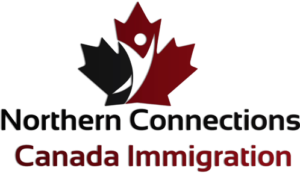On October 25, 2024, Canada unveiled its Immigration Levels Plan for 2025-2027, signalling a significant evolution in its immigration strategy. This newly articulated framework includes crucial adjustments to both permanent and temporary resident admissions. While Canada remains committed to welcoming newcomers, the plan reflects a strategic response to public sentiment and labour market needs.
About the Immigration Levels Plan
The Immigration Levels Plan is the government’s official document for communicating its approach to immigration. Each year’s plan includes targets for the upcoming year and the two years that follow. The targets for the immediate next year are generally held firm, while those for the second and third years are provisional and subject to change.
Key Highlights
- For the very first time, the Levels Plan includes targets for temporary residents, specifically international students and foreign workers as the government aims to reduce temporary resident population to below 5 per cent of Canada’s population by the end of 2026. This will see a decline in the temporary resident population by 445,901 in 2025 and 445,662 in 2026, followed by a slight increase in 2027 by 17,439.
- Immigration targets for permanent resident levels will see a reduction over the next three years; 2025 – 395,000 (reduced from the previous target of 500,000, 2026 – 380,000 (reduced from the previous target of 500,000) and 2027 – 365,000 target.
- The plan’s In- Canada Focus will see an estimated over 40 per cent of permanent resident admissions in 2025 from temporary residents who are already in Canada such as international students and temporary foreign workers.
- There is will an emphasis on economic priorities where economic immigration programs will be used to attract the workers Canada needs in key sectors such as healthcare and skilled trades. Approximately 62 per cent of immigration levels of will come from the economic classes.
- Renewed focus on Francophone immigration outside of Quebec, strengthening those communities and supporting their economic prosperity. To this end, permanent resident admission of Francophone immigrants will represent 8.5 percent in 2025; 9.5 percent in 2026 and 10 percent in 2027.
Overview of Immigration Targets
While the plan reflects an overall reduction of 105,000 in 2025 when compared to the previously released plan, this decision reflects a broader strategy aimed at balancing immigration levels with its impact on housing, infrastructure and social services. Importantly, while the targets are decreasing, they remain higher than pre-pandemic levels, reaffirming Canada’s position as a welcoming nation.
Permanent Resident Admissions Plan (2025-2027): The table below provides a summary of the target by immigration category:
| Immigration Category | 2025 Target | 2026 Target | 2027 Target |
| Federal Economic Programs | 47,400 | 47,400 | 47,400 |
| In-Canada Focus | 47,400 | 47,400 | 47,400 |
| Provincial Nominee Program | 55,000 | 55,000 | 55,000 |
| Total Economic | 232,150 | 229,750 | 225,350 |
| Overall Planned Admissions | 395,000 | 380,000 | 365,000 |
Other Measures:
- Focus on In-Canada Residents: The plan includes a robust target of transitioning 82,980 temporary residents to permanent residents in 2025. This reflects Canada’s desire to recognize the contributions of those already contributing to Canadian society and who will not place additional demand on social services.
- Occupational Priorities: The Immigration Levels Plan is designed to address labor shortages, emphasizing admissions for healthcare professionals, skilled trades, and individuals demonstrating proficiency in French.
- Reduction in Provincial Nominee Program (PNP) Allocations: A notable reduction of 50 per cent in PNP targets, down to 55,000 for 2025.
- Family Reunification: This continues to be a priority and will see families and loved ones reunited with nearly 24 per cent of the overall permanent resident admissions allocated to the family class.
Temporary Resident Admissions Plan: A New Focus
This new immigration plan is taking a holistic look at the scope of all newcomers including temporary residents for the first time. With Canada’s population standing at approximately 41.7 million, and latest Statistics Canada reports indicating approximately 3 million temporary residents currently in Canada, the government’s aim is to control volumes and reduce the temporary resident population to 5 per cent by the end of 2026. These targets for temporary residents do not include visitors to Canada and seasonal workers.
The table below details the temporary residents targets:
| Year | Target Arrivals | Workers (Total) | International Mobility Program | Temporary Foreign Worker Program | Students |
| 2025 | 673,650 | 367,750 | 285,750 | 82,000 | 305,900 |
| 2026 | 673,650 | 210,700 | 128,700 | 82,000 | 305,900 |
| 2027 | 543,600 | 237,700 | 155,700 | 82,000 | 305,900 |
Measures Designed to Reduce Temporary Resident Population:
- International Student Cap: As previously mandated in recent policy changes, international student admissions will be capped each year with a further reduction of 10% in 2025 compared to 2024 targets.
- Post Graduation Work Permit (PGWP) Program Reform: IRCC previously announced a tightening of PGWP eligibility requirements to better align the program with immigration goals and labour market needs.
- Reductions in Temporary Foreign Workers: The International Mobility Program is set for a 63% decrease, targeting 285,750 individuals in 2025, largely due to stricter access rules to the Post-Graduation Work Permit and spousal Open Work Permits. Similarly, the Temporary Foreign Worker program will be significantly reduced and stabilized at 82,000 admissions for each of the next three years.
Asylum Claims
Canada acknowledges its humanitarian responsibilities and the government indicates it is working on measures to address integrity issues in the asylum system and strengthen the in-Canada asylum process as the country is experiencing more asylum claims. Measures will include implementing a partial visa requirement for Mexican nationals, improving claims processing and reviewing visa decision-making to reduce the number of non-genuine visitors.
Overall Impact of Plan
This new immigration levels plan for 2025 to 2027 is expected to result in a marginal decrease in population of 0.2 per cent in 2025 and 2026. It will then see a population growth in 2027 of 0.8 per cent.
It is expected that this immigration levels plan will result in a reduction in the housing supply gap of approximately 670,000 units by the end of 2027.
Conclusion
Canada needs immigration to keep its economy strong and robust. Canada also remains one of the most welcoming countries with consistently high immigration levels. Despite these reductions, Canada’s immigration levels remain higher than pre-pandemic targets. These adjustments in immigration targets are a response to several factors, including the need to control temporary immigration levels and ensure the sustainability of immigration programs. In the short term, the plan will see a pause in population growth to achieve a well-managed, sustainable growth and economic prosperity in the long term with improved housing affordability and lower unemployment rates.
Canada’s immigration strategy continues to reflect a balance between control and openness, positioning it as an attractive option for individuals seeking to live and work in a diverse and inclusive society.
Get Expert Guidance on Canada’s Immigration Changes
If you’re considering immigrating to Canada or are currently a resident and worried about how these new immigration targets might affect your plans, we’re here to assist you. Schedule a personalized one-on-one consultation with our expert immigration consultants to help you navigate these changes effectively.
Our dedicated team will evaluate your unique circumstances, guide you through the application process, and ensure you remain compliant with the latest regulations. Contact us today to book your consultation and take the next step towards a successful future in Canada.
The Team at Northern Connections Canada



